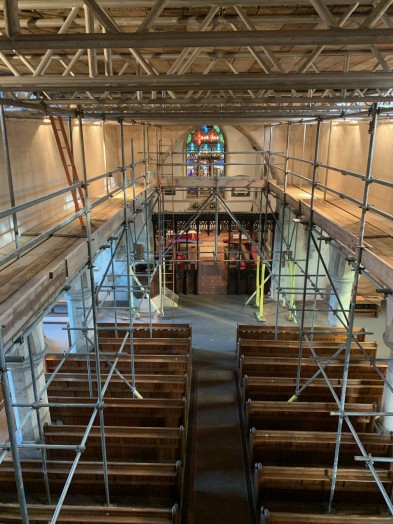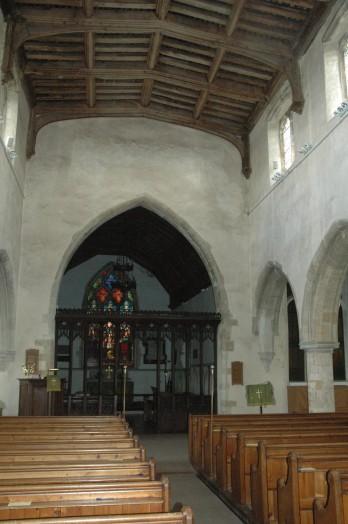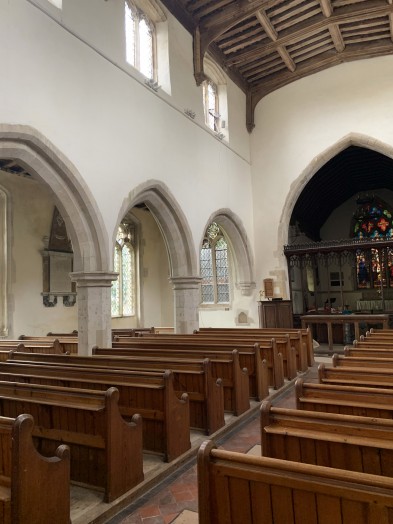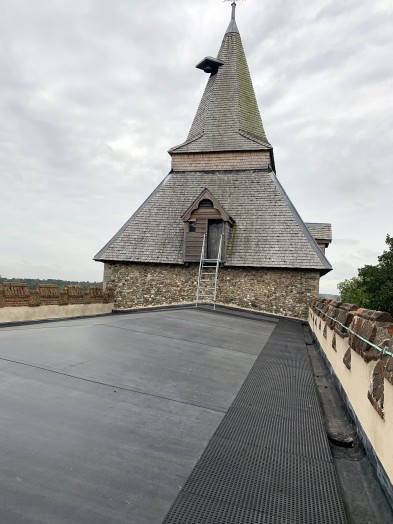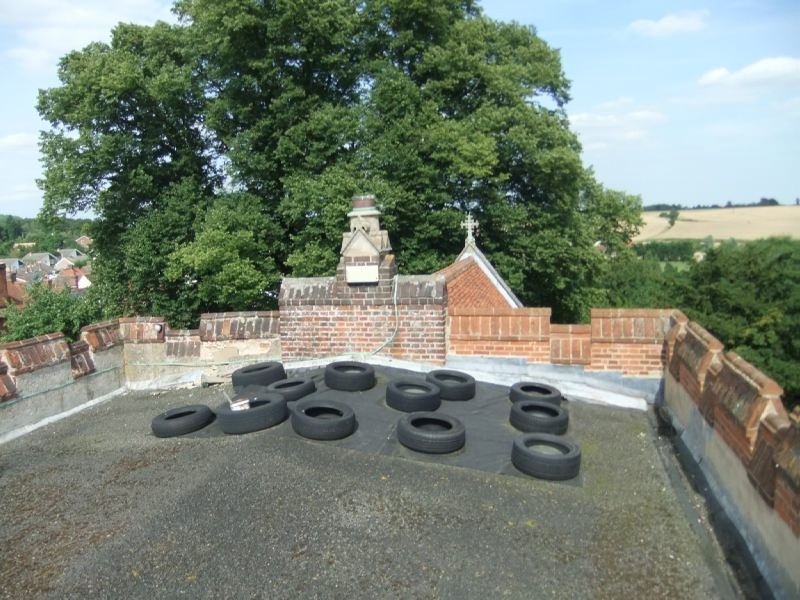
Wethersfield, St. Mary Magdalene
Roof repairs and internal decoration
Our church, St Mary Magdalene, sits in a central spot within the North Essex village of Wethersfield. It also plays a central role in the life of the village; we are open daily, and have at least two services a week.
The church dates mainly from the 12th–15th centuries, although there is evidence of the original Anglo-Saxon building by the north aisle. It has a distinctive low tower, somewhat Germanic in style, which stretches the full width of the nave and is topped with a spire clad in oak shakes.
Every fifty years a major repair cycle looms, and we have experienced this in full over the past five years, with both spire and roof needing complete repair. We completed our spire repair three years ago (new oak shakes) and then turned our minds to repairing the roof. The nave and north aisle roof were last reroofed in the 1970s in felt with granite chippings. The pitch of the nave is virtually flat. Over the past eight years the felt simply reached the end of its life and a full resurface beckoned. The roof was repatched until only patches remained and tarpaulin covered much of the roof, held down by tyres. Buckets were routinely positioned around the nave to catch the drips, and the structural 13th-century timbers of course were bearing the brunt. The church had been long known as a Grade I listed fridge, and now to cap this was damp and rotting.
We lobbied for the church to go on the Heritage at Risk Register, which helped give recognition that the problem was serious.
Resurfacing in lead (to match the south aisle, which was redone ten years ago) would have been the logical solution. Lead thefts in the area are rife, and our funds are, of course, limited. Additionally, none of the roofs are visible from ground level. As such we were keen to use the most cost-effective and longest-lasting material, and one that would not be stolen. As such rubber (fleece-backed EPDM) looked ideal, especially given the flat pitch. Rubber is good value, comes with a twenty-year guarantee, provides for insulation, and has limited value to thieves. Thanks to lobbying by our architect, David Whymark, and with the support of the DAC and English Heritage, we gained approval to use rubber.
The initial quote from the builders Lodge & Sons came in at £120,000. We embarked in faith on the project, in the knowledge that we could just about afford it assuming costs did not overrun. At this stage we had £40,000 committed from grant providers, £12,000 from a village fundraising exercise, and the balance of the cost covered from our church reserves (the entirety of our reserves in fact). Of this £40,000 the largest part, £12,500, was from the Friends of Essex Churches Trust. Frustratingly, due to the Covid crisis a major fundraising event planned for July 2020 did not take place, and we missed out also on routine giving at services. To compound this, the major national grant providers we could normally depend on were not funding heritage projects, and also some of the more traditional church funders turned down our applications as they disliked the use of a non-traditional material.
Once the building works started in January 2021, perhaps unsurprisingly they revealed some major damage to the structural timbers. In particular, Beam 3 (under which a bucket was normally placed) was so rotten it was no longer in contact with the nave wall. The cost of the project increased by £25,000 at this stage, and our funds and faith were challenged. Thanks to the FECT, who immediately committed an additional grant of £10,000, we were able to proceed with the major engineering works required. This consisted of a full-length steel flitch-plate going into Beam 3, steel wall-plates going into the nave wall to support all of the cross-beams, and a new wall support being made for Beam 3. Additionally, two new clerestory windows were made which can be opened to create cross-ventilation, thus reducing damp which was encouraging both rot and death-watch beetle.
While the scaffolding was up in the nave, a much-needed limewash was applied to the whole of the church interior, which gave it a complete refresh and lifted it completely. Fundraising will of course need to continue to finish paying for the project. We now have what feels like an entirely new church, insulated, watertight and gleaming. We are thrilled with the quality of the workmanship.
We are keen to use the building widely, for example community activities such as concerts.
Huge thanks to our architect David Whymark for his advice and management, and to Lodge & Sons for their workmanship. Lastly thank you sincerely to the FECT for backing this project and doing it so conclusively.
Ben Walmsley
Churchwarden
Wethersfield, St Mary Magdalene

